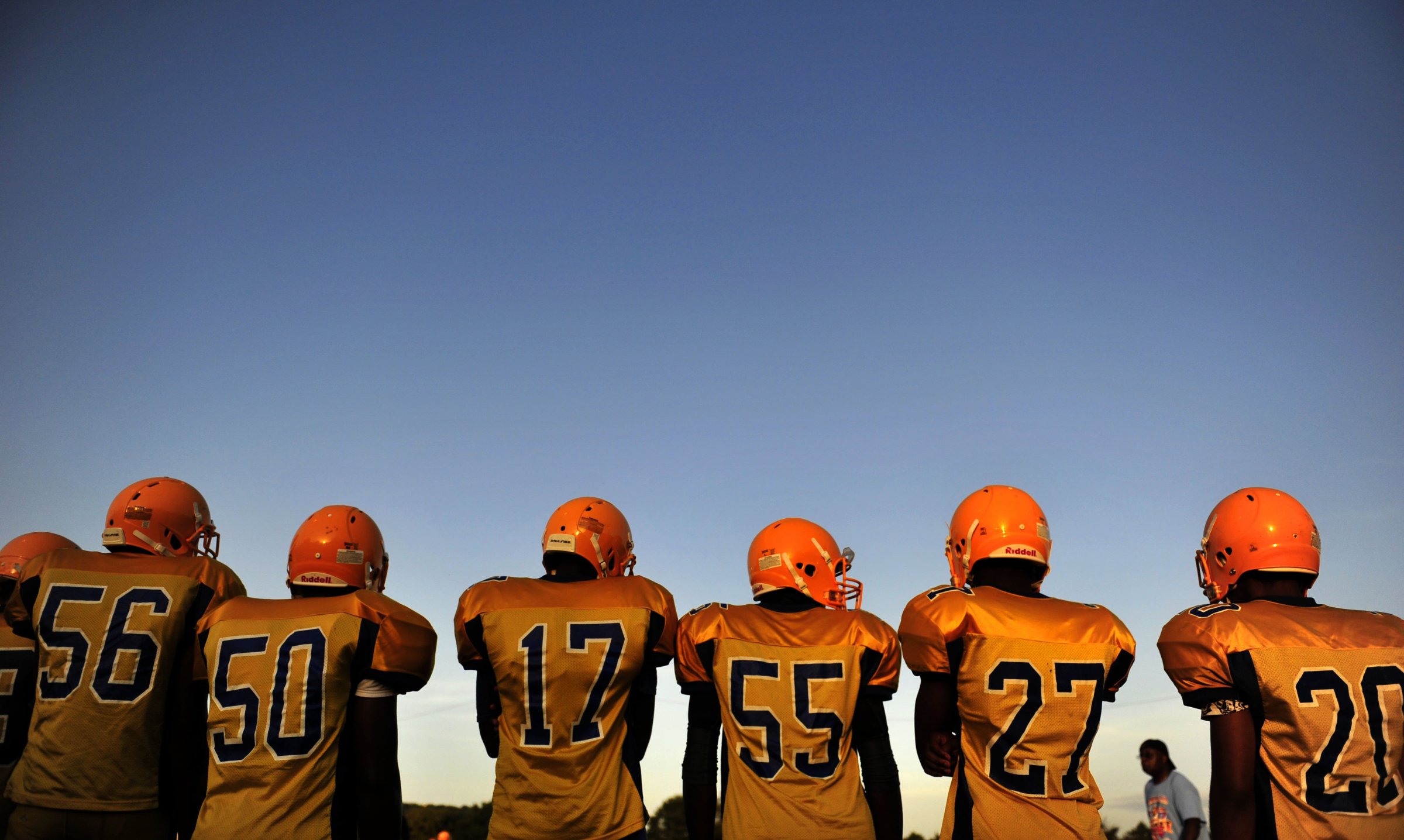
I no longer think children should play tackle football.
I played football for eight years, and was an All-Ivy defensive tackle for Harvard University. Football taught me about teamwork, toughness, and accountability. It gave me opportunities that I would not have otherwise had. It teaches invaluable lessons about community, manhood, and family. Regardless of the lesson, however, when is it ever acceptable to encourage a child to be hit hundreds of times in the head in the name of teaching a lesson?
Researchers at Virginia Tech found that seven-year-olds can hit each other in the head nearly as hard as college players. It’s not a pillow fight. These seven-year-olds, however, have a litany of biological disadvantages compared to the men on a college field. Proportionally, a child’s head is many times larger relative to their body mass, and his neck is weaker. The damage to a college or professional athlete’s brain can be severe, but it pales in comparison to the potential damage caused by brain trauma to the developing brain. There are critical windows in adolescence where the brain is maturing and rewiring, and it’s a terrible time to shake it up. By high school, their brains are more resilient to damage, they are more likely to have access to trained medical professionals on the sidelines, and they are more able to identify and report concussions.
My Sports Legacy Institute co-founder and senior advisor to the NFL Head Neck and Spine Committee Dr. Robert Cantu has been advocating for raising the age of tackle football for years, but concern for young players goes beyond just the medical community. Hall of Fame coach John Madden recently told NFL Commissioner Roger Goodell on a public panel, “I’m a firm believer that there’s no way that a six-year-old should have a helmet on and learn a tackling drill. There’s no way. Or a seven-year-old or an eight-year-old. They’re not ready for it. Take the helmets off kids.”
Other sports are getting the message. USA Hockey raised the age of the introduction of checking to 13, both to minimize brain injuries and to promote skills. US Lacrosse is using rule changes and penalties in an attempt to eliminate all hits to the head. Our Sports Legacy Institute is working with soccer legends like Brandi Chastain and Cindy Parlow Cone to eliminate heading the ball in soccer until high school, and this #SaferSoccer Initiative is quickly gaining supporters.
Football leadership is taking a different approach. The NFL is donating $45 million to the USA Football Heads Up tackling program, which is trying to convince parents and coaches that training children on tackling technique will limit risk, even though there is no scientific evidence that this will reduce hits to the head in young players.
There is a steadfast refusal to have a discussion about when tackle football, and the hundreds of hits to the head that come with it, is age-appropriate. Even baseball coaches refuse to teach players curveballs until around age 12 to protect their elbows. We need to protect children’s brains.
I worry that this inability to have a rational discussion about whether football should be different for men versus boys is driven by the football industry’s concern that admitting that tackle football is inappropriate for kids will cause children (and parents) to choose other sports, and never return to football in high school. However, the reality is that flag football and/or 7-on-7 are both healthy alternatives to introduce children to the fundamentals of a great game without purposeful repetitive brain trauma. Football should be less worried about enrollment figures, and instead invest in these safer alternatives, thus joining the growing trend of protecting young athletes who are the future of the game.
Let’s protect our players, and protect the game. Football at the NFL and collegiate levels is becoming rapidly safer with rule changes, fines, and better medical resources and care. However, we can’t provide that level of medical resources to children, and we cannot give them fines, so children will never be as safe as the professionals. Because children cannot give us informed consent, let’s take a step back and choose safer alternatives. I don’t know if the right age is 12, 13, or 14 years old to begin tackle, but I am certain it’s not 8. None of the lessons we want to teach children require purposeful brain trauma, so let’s change the games to fit our goals of healthier, happier children who are better prepared for success in life. The best way to preserve football’s legacy is to protect youth football players, and save hitting for high school. Our children will thank us.
Chris Nowinski is the founding executive director of the Sports Legacy Institute, a 501(c)(3) non-profit dedicated to concussion education, research, and advocacy, co-founder of the Boston University CTE Center, and the author of Head Games: the Global Concussion Crisis.
More Must-Reads from TIME
- Cybersecurity Experts Are Sounding the Alarm on DOGE
- Meet the 2025 Women of the Year
- The Harsh Truth About Disability Inclusion
- Why Do More Young Adults Have Cancer?
- Colman Domingo Leads With Radical Love
- How to Get Better at Doing Things Alone
- Michelle Zauner Stares Down the Darkness
Contact us at letters@time.com